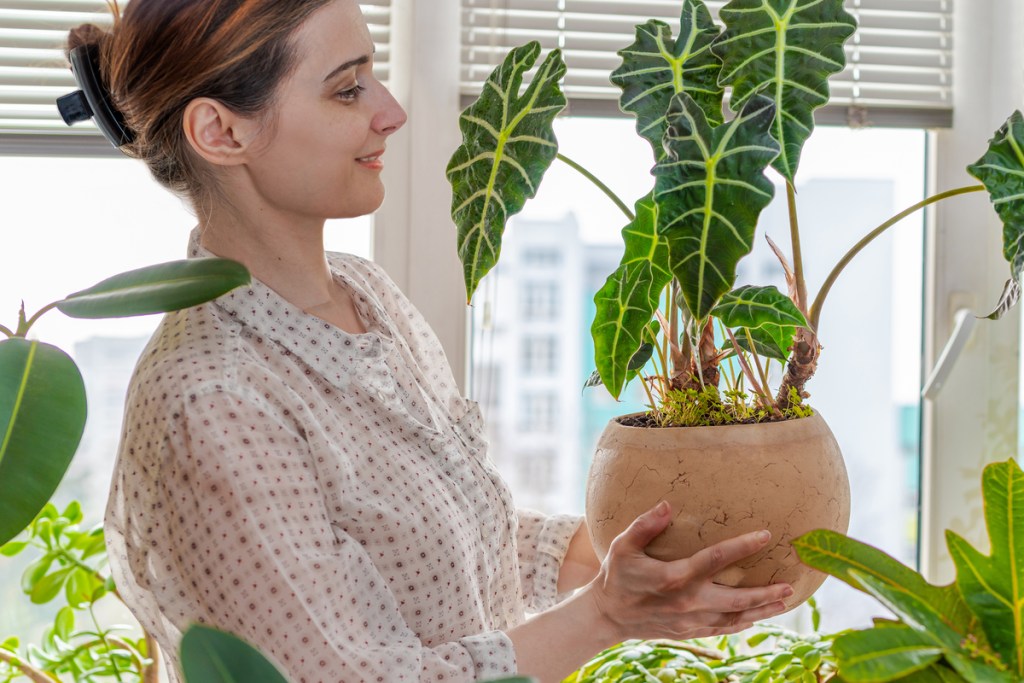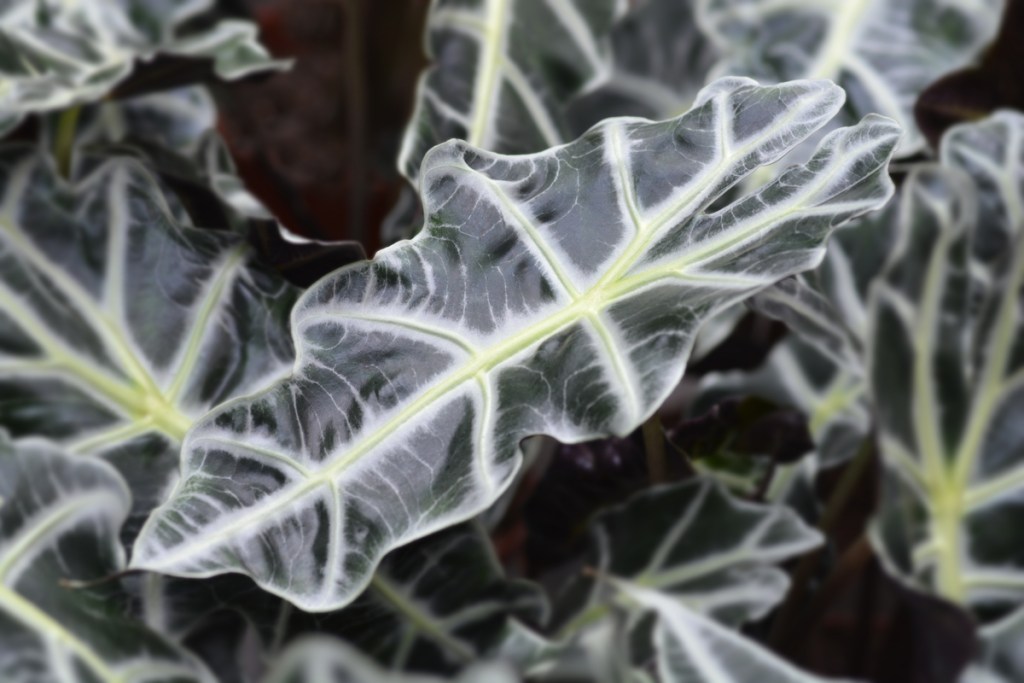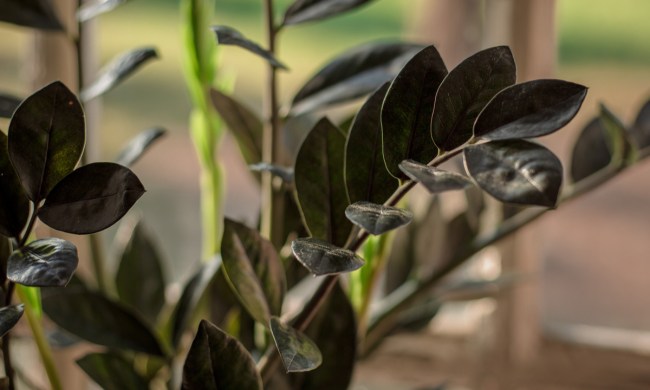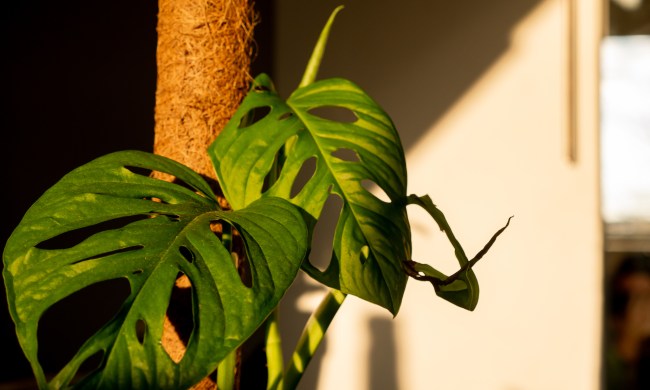The African mask plant is easily one of the most stunning plants out there with its glossy, dark green arrowhead leaves and contrasting silver veins. But in addition to its beauty, the African mask plant also has a reputation for being quite a finicky houseplant, flaunting foliage that’s prone to becoming crispy and turning yellow. If you’re adding one to your collection, it’s helpful to understand this plant’s requirements to better your chances of keeping it alive. Ahead, we’ll break down everything that you need to know about the African mask plant so you can give it the best care possible!

Where the African mask plant comes from
While called the African mask plant and the Amazonian elephant’s ear, this plant is actually from the jungles of the South Pacific. Many species originate from the Philippines, India, Southeast Asia, and New Guinea. In the United States, the most common variety you’ll find is the Alocasia Polly, a compact hybrid that’s often kept as a container plant inside homes. When planted in a pot, the African mask plant seldom blooms, but it’ll make for a striking houseplant nonetheless.

What you need to know about African mask plant care
From time to time, you may see a yellow leaf or a crispy edge pop up on your African mask plant — it’s not the easiest plant to care for, but it’s certainly not impossible to maintain! Since this plant has particular care requirements, here are tips on how to prevent and troubleshoot potential issues.
- Water: You want to water your African mask plant frequently so that its soil is consistently moist but not waterlogged. During the winter, only water when the top layer feels dry to the touch. That said, never let the plant dry out completely — this can lead to edges turning brown and crisp. Yellow and spotted leaves, on the other hand, indicate root rot from overwatering. If you notice these symptoms, consider changing the soil and cutting back on watering.
- Humidity: With African mask plants, humidity is a must. Since they come from the tropics, they need moist air and warm temperatures to grow. You can keep your plant near a tray of water or a humidifier. Leaving your plant in a naturally humid environment, like a bathroom, also helps. Humidity will encourage growth and also prevent spider mites. To keep your foliage looking lush, situate your plant away from air conditioners and heaters, which can dry out the leaves.
- Light: African mask plants naturally grow beneath trees in nature, so direct sunlight will burn their leaves. That said, they thrive with bright, dappled light — they’ll tolerate medium light but might grow slower and develop smaller leaves. To help your alocasia absorb light better, occasionally wipe dust buildup from the foliage.
- Fertilizer: Feed your alocasia with a diluted balanced fertilizer every month during the growing season. The African mask plant can be an especially heavy feeder during the spring and summer, but over-fertilizing it can cause its foliage to burn.
- Soil: The soil for the African mask plant should be well-draining and well-aerated. A loose combination of potting mix, perlite, and peat (or a peat alternative) should keep your African mask plant happy.
How to propagate an African mask plant
The African mask plant grows from rhizomes, and it’s easier to split up these root systems than to take a leaf cutting. You’ll want to start with a relatively crowded plant — or else you’ll be left with rather thin plants after you divvy up your original one. All you need to do is dig up your plant and loosen the roots. Then, take a clean knife or a pair of scissors and carefully separate the rhizomes. Place your new plant into fresh soil, and you now have two plants!
The African mask plant can be intimidating at first, but knowing its specific care requirements will help you manage any troubles you may encounter as you grow it. While it hails from tropical rainforests, you can definitely keep it as a statement houseplant in your collection by replicating some of its native conditions. With adequate watering, bright indirect light, and ample humidity, you’ll be nourishing a thriving African mask plant before you know it!



